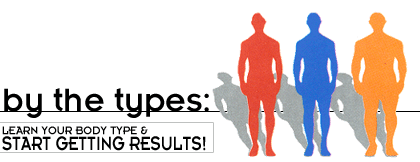Eggs: The Perfect Protein
How they build muscle: Not from being hurled by the dozen at your boss's house. The protein in eggs has the highest biological value—a measure of how well it supports your body's protein needs—of any food, including our beloved beef. "Calorie for calorie, you need less protein from eggs than you do from other sources to achieve the same muscle-building benefits," says Volek.
But you have to eat the yolk. In addition to protein, it also contains vitamin B12, which is necessary for fat breakdown and muscle contraction. (And no, eating a few eggs a day won't increase your risk of heart disease.)
How they keep you healthy: Eggs are vitamins and minerals over easy; they're packed with riboflavin, folate, vitamins B6, B12, D, and E, and iron, phosphorus, and zinc.
Almonds: Muscle Medicine
How they build muscle: Crunch for crunch, almonds are one of the best sources of alpha-tocopherol vitamin E—the form that's best absorbed by your body. That matters to your muscles because "vitamin E is a potent antioxidant that can help prevent free-radical damage after heavy workouts," says Volek. And the fewer hits taken from free radicals, the faster your muscles will recover from a workout and start growing.
How many almonds should you munch? Two handfuls a day should do it. A Toronto University study found that men can eat this amount daily without gaining any weight.
How they keep you healthy: Almonds double as brain insurance. A recent study published in the Journal of the American Medical Association found that those men who consumed the most vitamin E—from food sources, not supplements—had a 67 percent lower risk of Alzheimer's disease than those eating the least vitamin E.
Salmon: The Growth Regulator
How it builds muscle: It's swimming with high-quality protein and omega-3 fatty acids. "Omega-3's can decrease muscle-protein breakdown after your workout, improving recovery," says Tom Incledon, R.D., a nutritionist with Human Performance Specialists. This is important, because to build muscle you need to store new protein faster than your body breaks down the old stuff.
Order some salmon jerky from www.freshseafood.com. It'll keep forever in your gym bag and tastes mighty close to cold-smoked cow.
How it keeps you healthy: By reducing your risk of heart disease and diabetes. Researchers at Louisiana State University found that when overweight people added 1.8 grams of DHA—an omega-3 fatty acid in fish oil—to their daily diets, their insulin resistance decreased by 70 percent in 12 weeks.
Yogurt: The Golden Ratio
How it builds muscle: Even with the aura of estrogen surrounding it, "yogurt is an ideal combination of protein and carbohydrates for exercise recovery and muscle growth," says Doug Kalman, R.D., director of nutrition at Miami Research Associates.
Buy regular—not sugar-free—with fruit buried at the bottom. The extra carbohydrates from the fruit will boost your blood levels of insulin, one of the keys to reducing postexercise protein breakdown.
How it keeps you healthy: Three letters: CLA. "Yogurt is one of the few foods that contain conjugated linoleic acid, a special type of fat shown in some studies to reduce body fat," says Volek.
Beef: Carvable Creatine
How it builds muscle: More than just a piece of charbroiled protein, "beef is also a major source of iron and zinc, two crucial muscle-building nutrients," says Incledon. Plus, it's the number-one food source of creatine—your body's energy supply for pumping iron—2 grams for every 16 ounces.
For maximum muscle with minimum calories, look for "rounds" or "loins"—butcherspeak for meat cuts that are extra-lean. Or check out the new "flat iron" cut. It's very lean and the second most tender cut of beef overall.
How it keeps you healthy: Beef is a storehouse for selenium. Stanford University researchers found that men with low blood levels of the mineral are as much as five times more likely to develop prostate cancer than those with normal levels.
Olive Oil: Liquid Energy
How it builds muscle: Sure, you could oil up your chest and arms and strike a pose, but it works better if you eat the stuff. "The monounsaturated fat in olive oil appears to act as an anticatabolicnutrient," says Kalman. In other words, it prevents muscle breakdown by lowering levels of a sinister cellular protein called tumor necrosis factor-a, which is linked with muscle wasting and weakness (kind of like watching The View).
And while all olive oil is high in monos, try to use the extra-virgin variety whenever possible; it has a higher level of free-radical-fighting vitamin E than the less chaste stuff.
How it keeps you healthy: How doesn't it? Olive oil and monounsaturated fats have been associated with everything from lower rates of heart disease and colon cancer to a reduced risk of diabetes and osteoporosis.
Water: The Muscle Bath
How it builds muscle: Whether it's in your shins or your shoulders, muscle is approximately 80 percent water. "Even a change of as little as 1 percent in body water can impair exercise performance and adversely affect recovery," says Volek. For example, a 1997 German study found that protein synthesis occurs at a higher rate in muscle cells that are well hydrated, compared with dehydrated cells. English translation: The more parched you are, the slower your body uses protein to build muscle.
Not sure how dry you are? "Weigh yourself before and after each exercise session. Then drink 24 ounces of water for every pound lost," says Larry Kenney, Ph.D., a physiology researcher at Pennsylvania State University.
How it keeps you healthy: Researchers at Loma Linda University found that men who drank five or more 8-ounce glasses of water a day were 54 percent less likely to suffer a fatal heart attack than those who drank two or fewer.
Coffee: The Repetition Builder
How it builds muscle: Fueling your workout with caffeine will help you lift longer. A recent study published in Medicine and Science in Sports and Exercise found that men who drank 2 1/2 cups of coffee a few hours before an exercise test were able to sprint 9 percent longer than when they didn't drink any. (It's believed the caffeine directly stimulates the muscles.)
And since sprinting and weight lifting are both anaerobic activities—exercises that don't require oxygen—a jolt of joe should help you pump out more reps. Skip it if you have a history of high blood pressure, though.
How it keeps you healthy: By saving you from Michael J. Fox's fate. Harvard researchers found that coffee drinkers have a 30 percent lower risk of Parkinson's disease than nondrinkers.
source : men's health








